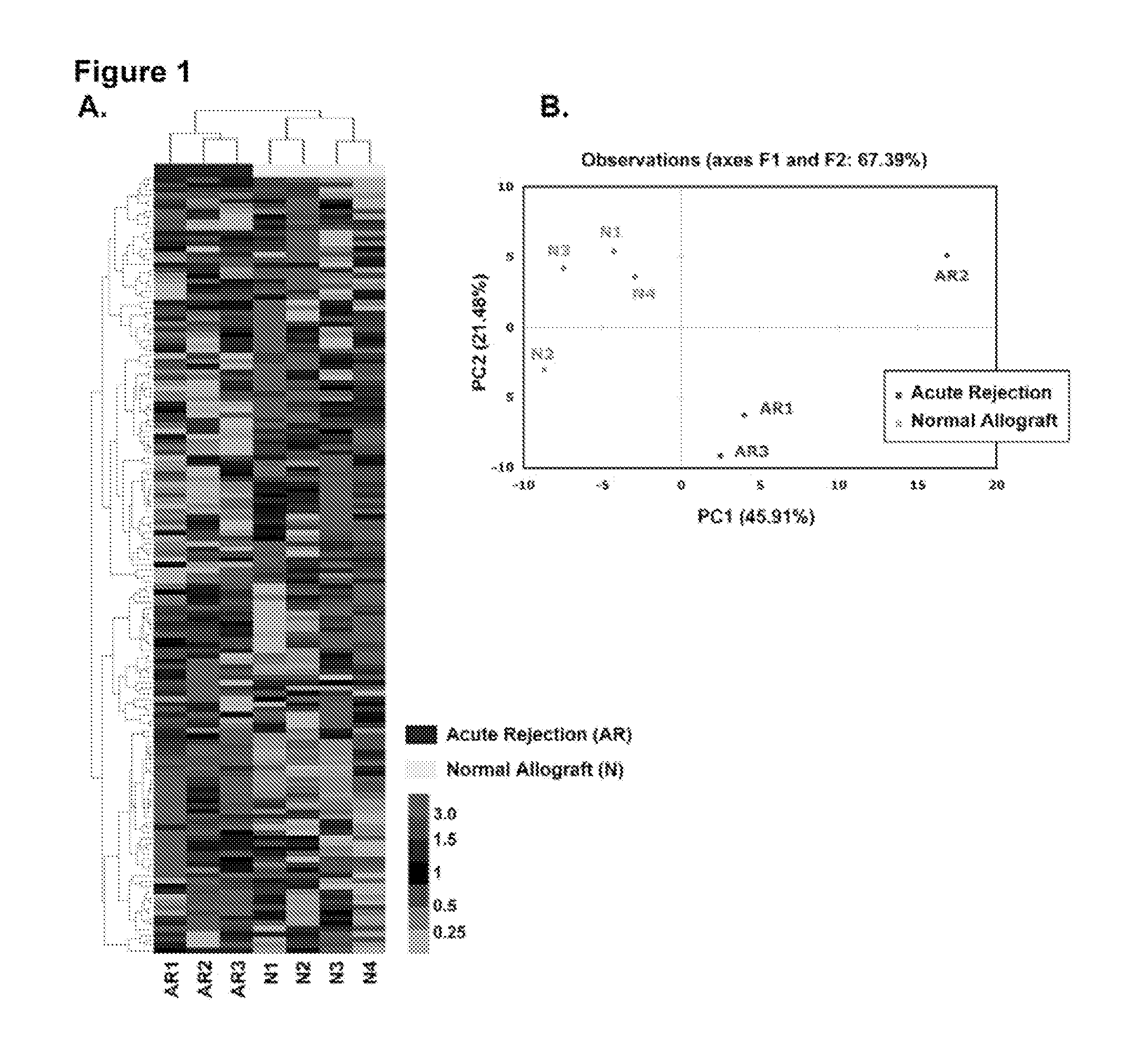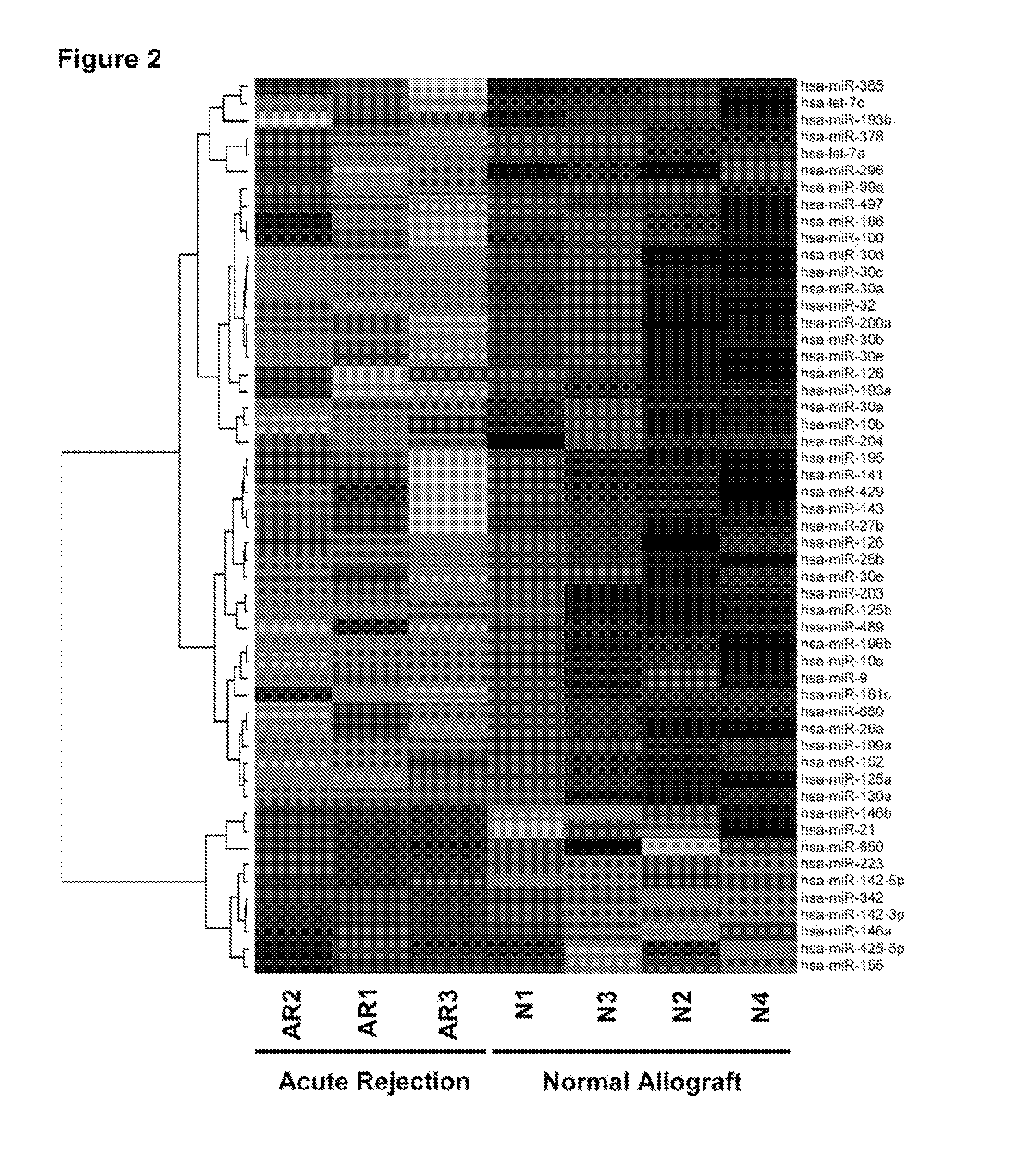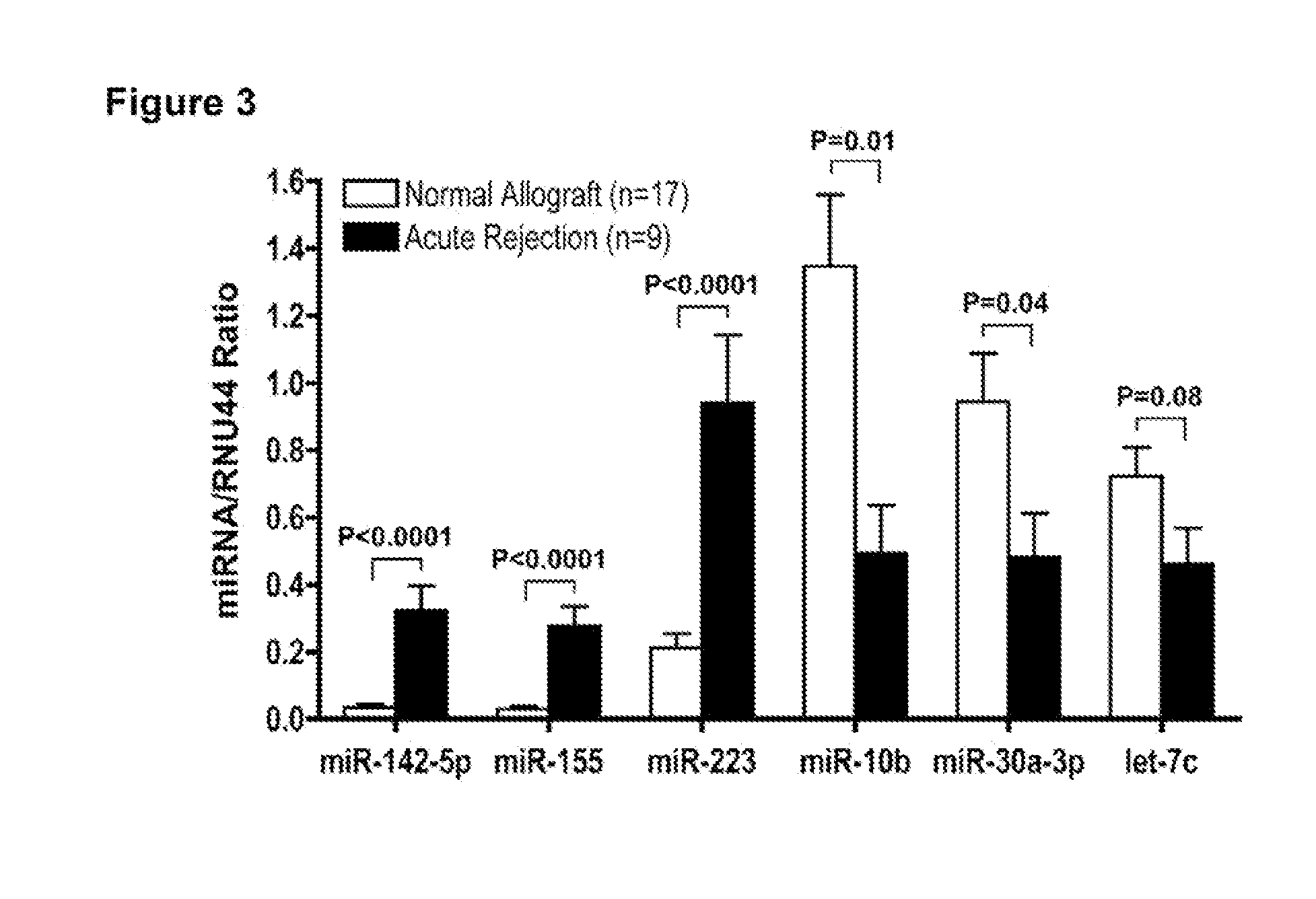Method to assess human allograft status from microrna expression levels
a technology of expression level and human allograft, which is applied in the field of human allograft status assessment from microrna expression level, can solve the problems of increasing the risk of rejection of transplanted organs, the threat of losing allografts, and the need for life-long treatment with non-specific, toxic and multiple immunosuppressive drugs, so as to and increase the risk of rejection
- Summary
- Abstract
- Description
- Claims
- Application Information
AI Technical Summary
Benefits of technology
Problems solved by technology
Method used
Image
Examples
example 1
[0098]MicroRNA Expression Profiles of Human Renal Allografts. We first determined global miRNA expression profiles of human renal allografts using microfluidic cards containing TaqMan primers and probes for 365 mature human miRNAs. The characteristics of patients whose renal allograft biopsies were studied for global miRNA expression patterns (training set), or for a subset of differentially expressed miRNAs (validation set), are summarized in Table 1.
[0099]Among the 365 mature human miRNAs analyzed in the training set (4 normal and 3 AR biopsies), 174±7 miRNAs (48%) were expressed in each biopsy sample (174±10 miRNAs in the AR biopsies vs. 174±4 miRNAs in the normal allograft biopsies). Unsupervised hierarchical clustering of miRNA expression patterns correctly classified the normal allograft biopsies and the AR biopsies (FIG. 1A).
[0100]The clear separation of AR biopsies from normal allograft biopsies was further confirmed by displaying the relationships among miRNA expression pat...
example 2
[0101]MicroRNAs Distinguishing Acute Rejection Biopsies from Normal Allograft Biopsies. Supervised analysis was used to detect miRNAs differentially expressed in AR biopsies and normal allograft biopsies. A subset of 17 miRNAs was differentially expressed at a P value<0.01. Among the 17 miRNAs, 10 (let-7c, miR-10a, miR-10b, miR-125a, miR-200a, miR-30a-3p, miR-30b, miR-30c, miR30e-3p, and miR-32) were underexpressed in AR biopsies compared to normal allograft biopsies, and 7 (miR-142-5p, miR-142-3p, miR-155, miR-223, miR-146b, miR-146a, and miR-342) were overexpressed (FIG. 2 and Table 3). At a P value<0.05, 33 additional miRNAs were found to be underexpressed in AR biopsies compared to normal allograft biopsies, and only 3 miRNAs were found to be overexpressed (FIG. 2 and Table 3).
TABLE 3Differential expression of microRNAs in human renal allografts*SEQ IDmiRNATarget SequenceNO:Mean fold P value †Overexpressed in ARhsa-miR-142-5pCAUAAAGUAGAAAGCACUAC118.48hsa-miR-142-3pUGUAGUGUUUCCUA...
example 3
[0102]Validation of the MicroRNA Signatures Predictive of Renal Allograft Status. An independent set of 26 renal allograft biopsies (9 AR biopsies and 17 normal allograft biopsies) was used to validate a subset of miRNAs identified by global expression profiling to be differentially expressed in AR biopsies and normal allograft biopsies. FIG. 3 confirms the differential expression of miRNAs in AR biopsies compared to normal allograft biopsies. As observed in the training set, miR-142-5p (P<0.0001), -155 (P<0.0001), and -223 (P<0.0001) were overexpressed in AR biopsies in the validation set, and miR-10b (P=0.01), miR-30a-3p (P=0.04), and let-7C(P=0.08) were underexpressed.
PUM
| Property | Measurement | Unit |
|---|---|---|
| Time | aaaaa | aaaaa |
| Volume | aaaaa | aaaaa |
| Time | aaaaa | aaaaa |
Abstract
Description
Claims
Application Information
 Login to View More
Login to View More - R&D
- Intellectual Property
- Life Sciences
- Materials
- Tech Scout
- Unparalleled Data Quality
- Higher Quality Content
- 60% Fewer Hallucinations
Browse by: Latest US Patents, China's latest patents, Technical Efficacy Thesaurus, Application Domain, Technology Topic, Popular Technical Reports.
© 2025 PatSnap. All rights reserved.Legal|Privacy policy|Modern Slavery Act Transparency Statement|Sitemap|About US| Contact US: help@patsnap.com



